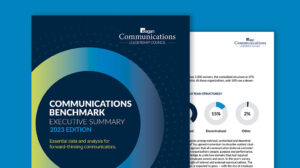Pay transparency as a step toward equity and hiring
New York City is the latest state to pass a law requiring salary ranges be included in job listings, and employees favor this change.

The end of December 2021 was a busy time, so you would be forgiven if you missed the news amidst the holiday rush and COVID-19 headlines that New York City passed a bill requiring employers to post salary ranges in job listings. Passed by the New York City Council with a decisive vote of 41 to 7, the bill is set to go into effect in April 2022. This move toward pay transparency means employers could be fined or have a lawsuit filed against them if they do not comply.
In a statement to Insider, Manhattan Councilwoman Helen Rosenthal, co-sponsor of the bill, said, “Every New Yorker should have the right to determine whether they will be able to support themselves and their family when they apply for a job. It’s time to level the playing field and restore some dignity to New Yorkers seeking employment.”
New York City is the latest in a line of cities and states to enact a pay transparency requirement, bringing to the private sector what public sector workers have long enjoyed. The list of places where salary ranges for a particular role or job opening are accessible to applicants and current employees, reported by Money, includes: California; Cincinnati, Ohio; Colorado; Connecticut; Maryland; Nevada; Rhode Island (forthcoming in 2023); Toledo, Ohio; and Washington.
There are differences in each law around pay transparency, but 21 states ban the use of applicants’ salary history to determine future pay as well. Yet, disclosure is not automatic in California, Maryland, Rhode Island or Washington, as salary information is only available “upon request.” In Nevada, applicants must have completed an interview and then will automatically receive salary information. The Colorado law requires a salary range and brief description of the benefits package on a job listing; this also applies to national companies who are hiring remotely within the state.
Transparency does not equal equity, but it could attract candidates
While each law covers slightly different ground, they all take aim at correcting pay inequities. WorldatWork’s “Pay Equity Study,” which surveyed 997 organizations, found 66% of organizations taking action on pay equity in 2021. Thirty-one percent have the issue on their radar but have not yet responded, with 88% of those indicating the cost to fix pay inequities as a barrier.
Despite the 6% increase year-over-year in organizations taking action per WorldatWork, Insider reports that in 2020 women earned 83 cents for every dollar paid to a man, while Black men earned around 71 cents and Black women are paid 63 cents for every dollar paid to a white man. Clearly, there is more work to be done.
Beyond laws requiring pay transparency or even employers seeing pay equity as the “right thing” to do, there may be a competitive advantage. The BBC notes that “Organisations that are more transparent about their salaries can win over the best candidates and attract diverse applicants.” Pay transparency also may help employers hold on to workers.
Going a step further, Shelly Holt, chief people officer at PayScale, recognizes the move to pay transparency is slow moving but could be picking up the pace. “‘I think there are going to be societal pressures that continue to push this, particularly in the area of diversity, equity and inclusion,’ she explains. The market is tightening, she adds, ‘so just doing things the way we’ve always done it isn’t going to help organisations get ahead.’”
Pay transparency is an important first step, though not likely to close gender and racial pay gaps all together. But C. Nicole Mason, gender- and racial-equity researcher and CEO of the Institute for Women’s Policy Research, says, “I think if companies can see this as an opportunity rather than a punitive measure, they can really help us all get to a better place.”






